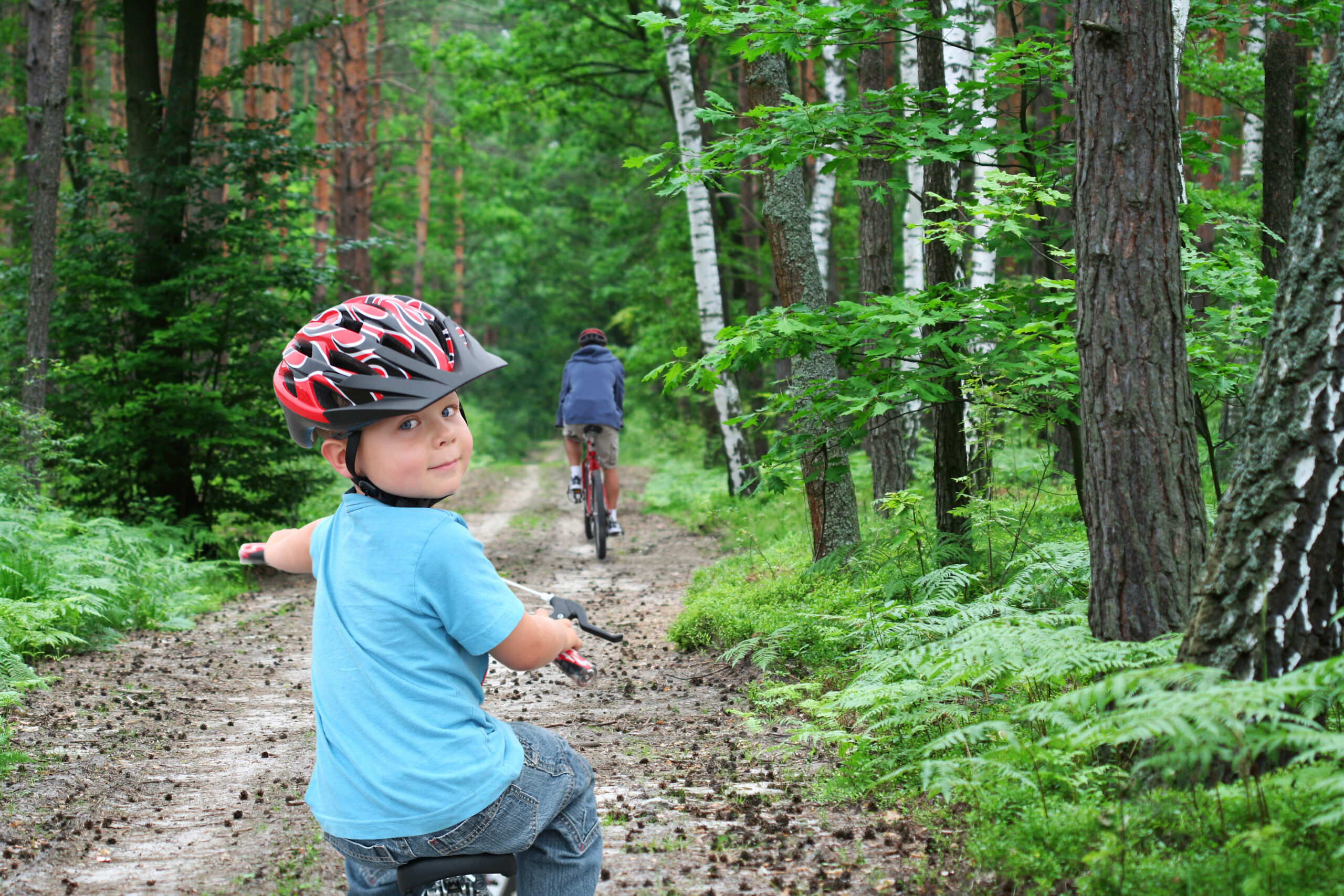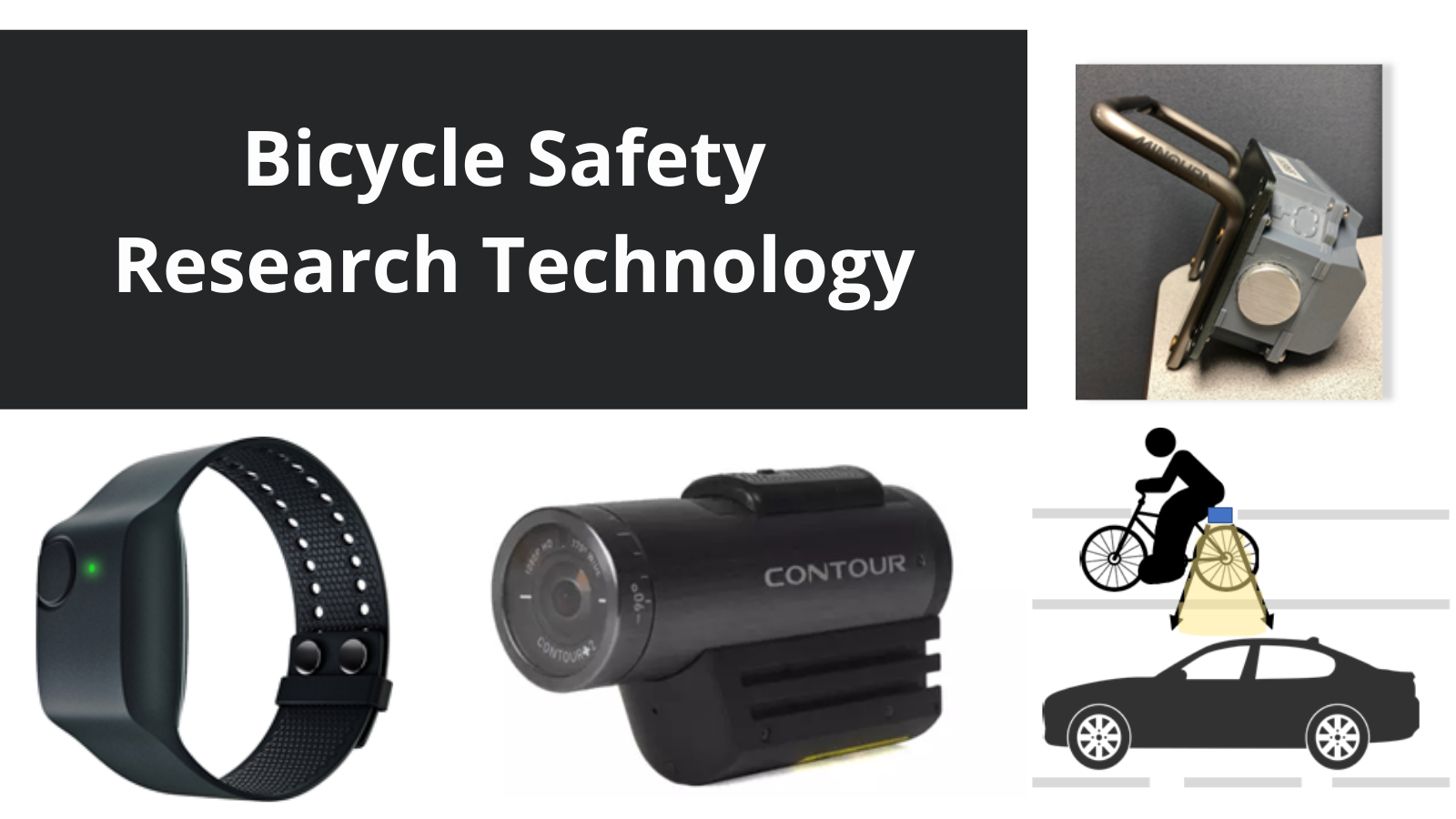This month many children around the country will be returning to in-person school after over a year of online and hybrid learning due to the COVID-19 pandemic. While some will arrive to school by buses and cars, others will walk or ride their bicycles.
Cara Hamann, a bicycle safety expert at the UI Injury Prevention Research Center, said parents should talk to their kids about bicycle safety: rules of the road, where to ride, and which routes to take.
“Parents should help their kids plan safe routes to and from school, such as choosing low traffic streets,” she said. “Riding with their children to practice these things would also be beneficial. Repetition and reinforcement are key.”
Hamann uses technology – such as GPS-enabled helmet cameras – with child and adult bicyclists to study dangers they are exposed to while riding and risky riding behaviors that make them and others on the roads/sidewalks less safe. These cameras capture real-world bicycling from the bicyclists’ perspective: what they see on the road, what other cars are doing, and how they are riding.

Hamann said this technology and others that her team uses in studies show how behavior and the environment interact and can help identify what policies, infrastructure changes (like bike lanes) and educational programs are needed to improve safety.
“Studying bicyclists in their natural setting gives us a first objective look into the bicycling experience—things we can’t get from crash or hospital data,” she said.
From their studies, Hamann said, they have learned that children ride more often on sidewalks than adults and tend to choose busier roads.
“Children have more handling-related errors, while adults have more traffic violations, such as rolling through a stop sign,” she said. “Intersections are problematic for both children and adults in terms of errors and also being exposed to risks because they are conflict points.”

In 2018, Hamann examined bicycle education programs around the country and published a resource for educators looking for best practices and age-appropriate components for teaching children bicycle safety. The resource can help educators select appropriate education programs and identify key elements to include in their bicycle safety education curricula.
Most youth bicycle education programs in the U.S. (59%) are not age specific, Hamann said, and kids receive either very little or inconsistent instruction from parents, teachers, or other adults related to proper bicycling behavior.
Locally, Hamann and her team are partnering with the Neighborhood Centers of Johnson County and the Iowa City Bike Library to evaluate their adolescent bicycle safety training program.
“We hope that results from our project will help to improve and standardize bicycle safety education programming for kids,” she said. We are excited about this partnership with two fantastic community organizations.”

Do daytime lights on bicycles make bicyclists safer?
Steven Spears, Associate Professor in the UI School of Planning and Public Affairs, said one of the major pushes toward making transportation in cities more sustainable is getting people to use bicycles instead of cars for shorter trips. However, he said, fear of riding in traffic is still a big barrier for new cyclists, especially as COVID-19 pandemic restrictions loosen and roads return to normal traffic.
Spears and Hamann received a UI IPRC pilot grant to study the impact of daytime running lights on motorist behavior and whether the lights have any effect on bicyclist perceived or actual stress. They partnered with researchers at Iowa State University and UI College of Business (Xun Zhou, Associate Professor, who has expertise in big data analytics, spatial data, and machine learning.) The study collected data from 40 bicyclists in Johnson County, Iowa.
“We measured motorist lateral passing distance when overtaking bicyclists with and without daytime running lights using a lateral passing distance sensor mounted on the bicycle,” Hamann said. “We also had bicyclists rate their stress and measured bicyclists’ perceived comfort in traffic during rides and their traffic stress level using wrist-mounted physiological monitors.”
Spears said systems like daytime running lights are simple, cost-effective ways to make cyclists more visible and help drivers to see cyclists and share the road.
“Anecdotally, I have been using rear daytime running lights regularly the last few years,” Spears said. “Even as an experienced cyclist I appreciate the extra margin of safety they give me through being more visible.”
High lumen LED lights that are visible in daylight are increasingly popular with bicyclists and are being marketed as safety devices. However, evidence of the impact of these lights on safety while bicycling is extremely limited. Hamann said analyses for their study are currently underway.
“The results will help inform safety practices or policies related to the use of daytime running bicycle lights,” she said.
Spears said bicycling helps people get more physical activity and improves fitness while reducing pollution and conflicts with motor vehicle traffic.
“Getting more bikes on the road has a couple of big benefits from a public health standpoint.”
Published August /16/2021
See our infographic: Bicycle safety: What we should teach children?
CDC: Bicycle safety enhanced by the University of Iowa Injury Prevention Research Center